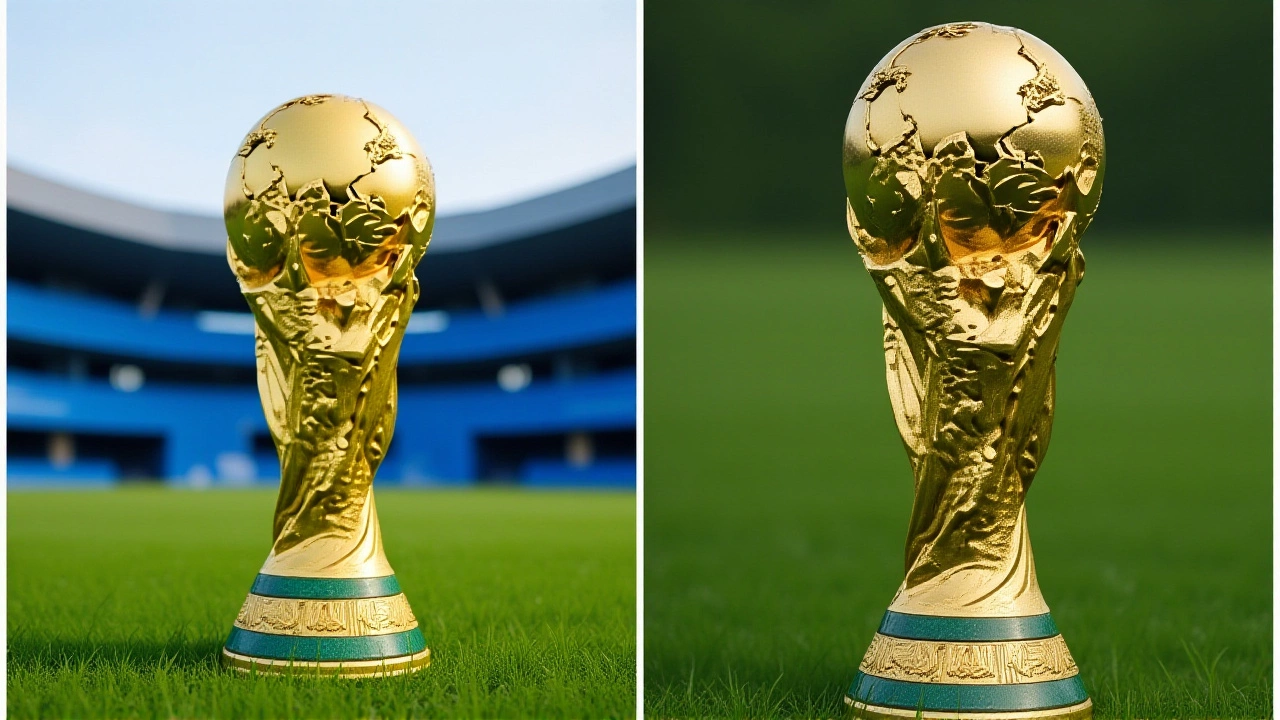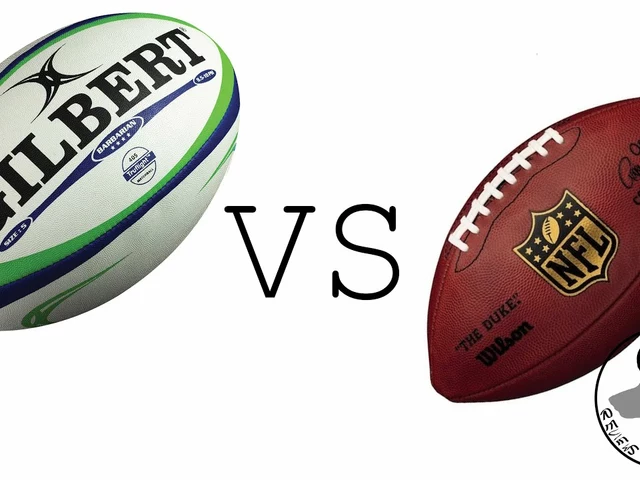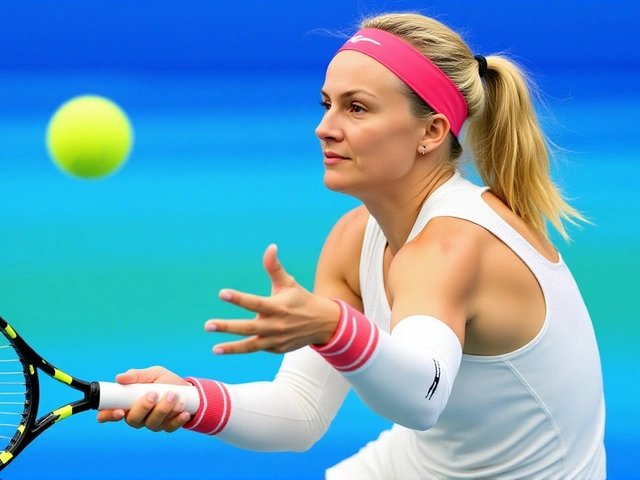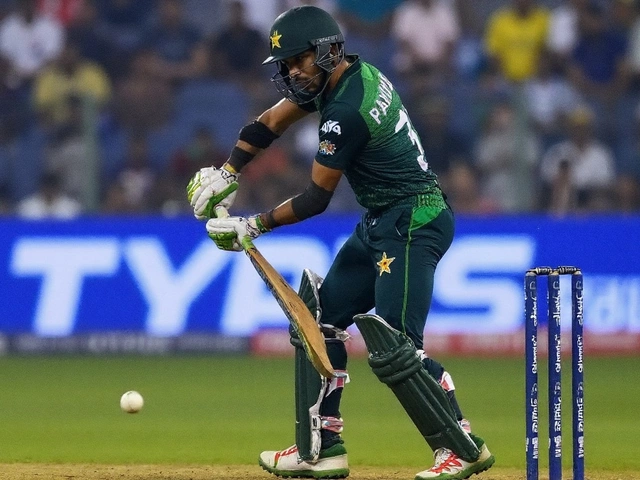On November 18, 2025, San Marino took the field against Romania in a World Cup qualifier that wasn’t just about points—it was about strategy, semantics, and a quirk of football bureaucracy so strange it felt like satire. With zero points from eight matches, San Marino had already been eliminated from direct qualification. But here’s the twist: losing might have given them a better shot at the 2026 FIFA World Cup playoffs. Not winning. Losing. And it wasn’t a joke—it was real, documented by FIFA, UEFA, and multiple sports outlets.
The Impossible Math: Why Losing Could Help
San Marino, a microstate of just 33,900 people sandwiched between Italy and the Adriatic, entered the match with the worst goal difference in European qualifying history: -37. They’d scored two goals all campaign—both in this final match. Nicolas Giacopetti netted in the 67th minute, giving San Marino their first lead in a World Cup qualifier in 32 years. It was a moment of pure, improbable joy. But joy was fleeting. Romania equalized, then scored four more. Final score: 1-5, according to UEFA. (Some reports said 1-7—discrepancies abound, but the result was the same.)The reason this mattered wasn’t about San Marino’s chances of winning the match. It was about what happened after. UEFA’s playoff system for the 2026 World Cup ties World Cup qualifying performance to UEFA Nations League standings. Teams are slotted into one of four playoff paths—A, B, C, or D—based on their Nations League tier. Path D is for the weakest teams: League D nations like San Marino. Path C? Stronger. Much stronger. And here’s the kicker: if San Marino had won, they’d have been promoted to Nations League C for the next cycle. That meant, under UEFA’s rules, they’d be moved from Path D to Path C in the playoffs. Path C included teams like Denmark, Wales, and North Macedonia. Path D? Hungary, Finland, and... well, still mostly minnows.
So winning meant tougher opponents. Losing meant staying put—with the weakest possible draw. In theory, San Marino’s odds of advancing through two playoff rounds (semifinal and final) were slightly better if they stayed in Path D. The math was absurd. The logic, bureaucratic. The stakes, surreal.
How the System Works (And Why It’s So Confusing)
The 2026 FIFA World Cup will feature 48 teams, with 16 European slots. Twelve go to group winners and top runners-up. The remaining four? Determined by playoffs. But UEFA didn’t just use qualifying results. They layered in Nations League performance—a system introduced in 2018 to give smaller nations more meaningful games. The idea was noble: reward consistency, even if it’s in lower leagues. The unintended consequence? A labyrinth of rules where a team’s fate hinges not on performance in the World Cup qualifiers, but on their performance in a separate, parallel competition.San Marino finished Group H with 0 points. Romania finished third with 13. Austria (19) and Bosnia and Herzegovina (17) topped the group. But playoff eligibility wasn’t just about group position. It was about Nations League ranking. San Marino, despite being winless in qualifying, had earned enough points in the Nations League to qualify for Path D. A win against Romania would’ve triggered promotion to League C, which reset their playoff path. Loss? Stay in D. Simple. Too simple? Maybe. But it’s what UEFA wrote.
Who Was Affected? And Who Wasn’t
The playoff draw on November 20, 2025, confirmed who made it: Czechia, Albania, Wales, North Macedonia, Italy, Bosnia and Herzegovina, Romania, Poland, Ireland, Turkey, Ukraine, Denmark, Kosovo, Sweden, and Slovakia. San Marino wasn’t on it. Their final loss confirmed their elimination.But the ripple effect? Real. Nations League performance gave North Macedonia and Sweden playoff spots despite finishing outside the top two in their groups. Meanwhile, traditional powers like Portugal and the Netherlands—both strong in qualifying—missed the playoffs entirely because they dropped into lower Nations League tiers. The system rewards consistency over flash. It’s not always fair. But it’s structured.

What This Means for Future Qualifiers
San Marino didn’t qualify. They never had a realistic chance. But the scenario exposed a flaw in UEFA’s design: it incentivizes teams to lose. Not to win. Not to compete. To lose strategically. And that’s dangerous. What happens when a team in a higher league, say, Hungary or Slovakia, finds themselves in a similar position? Could they be tempted to tank a match? Could a manager be pressured to rest key players? The rules don’t forbid it. They just don’t account for human behavior.UEFA has been quietly adjusting these rules since 2020, but the 2026 cycle is the first where the interplay between Nations League and World Cup qualifying created a scenario this bizarre. Next cycle? They’ll likely tweak it. Maybe they’ll tie playoff paths strictly to World Cup qualifying group position, not Nations League promotion. Or maybe they’ll add a cap—no team can be promoted into a higher playoff path unless they finish in the top three of their group.
For now, San Marino’s 1-5 loss to Romania stands as one of the most peculiar moments in modern football history. Not because they scored. Not because they lost. But because, for a fleeting 67 minutes, they were in control of their own destiny—and the world watched, confused, amused, and strangely moved.
Frequently Asked Questions
Could San Marino have actually qualified for the World Cup by losing?
No—this was purely theoretical. Even if San Marino had stayed in Path D, they’d have needed to win two playoff matches against teams like Hungary or Finland, both of whom have far superior squads. San Marino had never won a competitive match since 2004 and had lost 41 of their last 42 qualifiers. Their best chance was less than 0.1%. The scenario was a statistical curiosity, not a realistic pathway.
Why does UEFA link Nations League performance to World Cup qualifying?
UEFA introduced the Nations League in 2018 to replace meaningless friendlies with competitive matches for all 55 member associations. By tying it to World Cup playoffs, they ensured even the smallest nations had meaningful games and a shot at qualification. It rewards consistency over one-off performances, giving teams like San Marino a chance to climb the ladder—even if the system creates odd incentives like this one.
Did any other team benefit from this rule in 2026?
Yes. North Macedonia, Sweden, and Romania all qualified for the playoffs primarily because of their Nations League results, not their World Cup group finishes. Romania finished third in Group H but had a strong Nations League record. Without the Nations League tie-in, they wouldn’t have made it. This system helped smaller teams, but also created the San Marino paradox.
What happened to San Marino after the match?
San Marino remained in Nations League D for the 2026–27 cycle. They finished last in their group again, but the emotional high of scoring in a qualifier—after 32 years—became a cultural moment. The team’s manager, Davide Brivio, said the goal by Giacopetti was "the most important goal in our history." Fans in the tiny capital of San Marino held a street party. No one cared about playoff paths anymore.
Will UEFA change the rules for 2030?
Almost certainly. While the Nations League link has helped smaller nations, the San Marino scenario revealed a loophole that could be exploited. UEFA insiders have privately acknowledged the issue. Likely fixes include capping playoff path eligibility to group finish only, or introducing a minimum points threshold for promotion to higher paths. The goal is to preserve fairness without encouraging teams to lose.
Is this the strangest football rule ever?
It’s up there. The 1982 World Cup’s "Disgrace of Gijón"—where West Germany and Austria played to a 1-0 result to eliminate Algeria—was more scandalous. But this? It’s the first time a team’s best chance to qualify hinged on losing on purpose. Football’s beauty is in its simplicity. Sometimes, the bureaucracy makes it beautifully, bizarrely complicated.






Written by Caspian Beauchamp
Hello, I'm Caspian Beauchamp, a sports enthusiast with a strong passion for rugby. I've been following the sport for years, and I've gained extensive knowledge about its history, rules, and strategies. My love for rugby has led me to write informative and engaging articles that cater to both die-hard fans and newcomers alike. I enjoy analyzing matches, discussing players' performances, and sharing my insights with fellow rugby lovers. My ultimate goal is to spread the excitement of the game and help people appreciate the beauty of this incredible sport.
All posts: Caspian Beauchamp